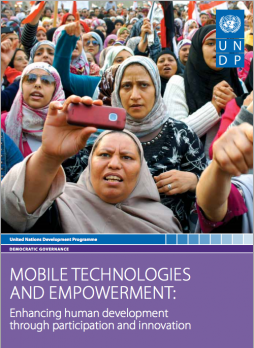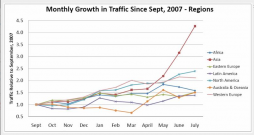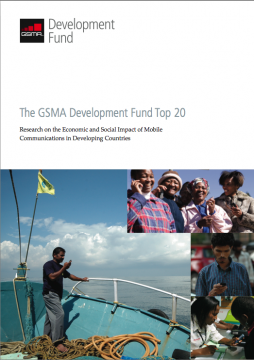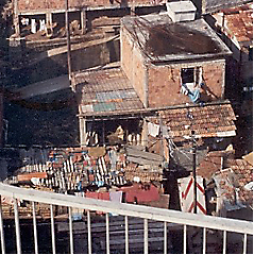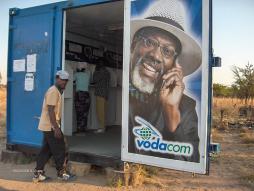developing countries
Posted by Sayama on Mar 12, 2012
Editor's Note: Mairead Heffron is the guest author of this post. She is a former staffer at UNDP on other projects, but reviewed the report in her personal capacity. We appreciate her guest contribution!
A report, recently published by UNDP, on mobile technologies and human development, “Mobile Technologies and Empowerment: Enhancing Human Development through Participation and Innovation”, does a good job of summarizing the many ways in which mobile technologies are being used successfully as tools for stimulating development. It's intended to provide information and ideas for development practitioners on how mobile technologies and applications can be used appropriately and effectively in international development projects. The aim is not to employ technology-based solutions as an end in themselves, but rather as the means to achieving desired development outcomes.
The report begins by examining trends in mobile usage in developing countries. Predictably In Sub-Saharan Africa, only a few countries register 100% or higher penetration (percentage of SIM cards per capita). By the end of 2012, it's estimated that these countries, South Africa, Botswana, and Gabon, will all have mobile penetration rates on a par or slightly higher than that of GermanyFigures for countries on the lower end of the human development index are substantially lower, but still show a massive difference between fixed line subscription penetration and mobile penetration. Witness Mozambique, for example, with 35% mobile penetration, and a dismal 0.3% fixed line penetration (prediction, end of 2011).
Posted by ccarlon on Sep 20, 2011
The Development of Mobile Money Systems data sheet 1887 Views
Author:
Flores-Roux, Ernesto and Judith Mariscal
Abstract:
In this paper we argue that mobile banking offers the opportunity to diminish the financial exclusion suffered by the poor by offering access to credit and to savings which are key tools capable of transforming the livelihoods of the poor as well as the efficiency of the market. However, mobile phones need a complete ecosystem that supports its application to a functioning mobile banking service.
The aim of this paper is to contribute to existing knowledge of mobile money across the value chain by providing insight into the mechanisms of m-money, the value propositions within the business of m-banking and what is preventing its swifter adoption and usage in the developed world. We develop a taxonomy of the key drivers of the business model which provides insights for assessing the replicability of these models in other countries. We focus on models developed in Kenya and the Philippines and explore what is lacking for a widespread adoption in Latin American countries, such as Mexico, in order to observe what is preventing the creation and usage of m-money models for the BoP.
Posted by ccarlon on Sep 16, 2011
Harnessing the Mobile Revolution to Bridge the Health Education & Training Gap in Developing Countries data sheet 479 Views
Author:
Callan, Paul, Robin Miller, Rumbidzai Sithole, Matt Daggett, and Daniel Altman from Dalberg Global
Abstract:
This report for mHealthEd 2011 at the Mobile Health Summit focuses on the effectiveness of mHealth Education applications, analyzing at length the first wave of projects and the steps to be taken into consideration for further initiatives.
The first wave of mHealthEd applications for health workers – most introduced within the last 4 years and some of which are 7 presented in this report – include ones which enable workers to learn new treatment procedures, test their knowledge after training courses, take certification exams remotely, look up information in medical reference publications, and trade ideas on crucial diagnostic and treatment decisions. It is too early to test for impacts on health outcomes, but projects suggest that mHealthEd applications are improving the provision of care and levels of knowledge. Improved training can also increase job satisfaction and reduce attrition rates for healthcare workers.
Posted by VivianOnano on Jul 12, 2011
Mobile Telephony Access and Usage in Africa data sheet 1983 Views
Author:
Chabossou, A., Stork, C., Stork, M., Zahonogo. Z.
Abstract:
This paper uses data from nationally representative household survey conducted in 17 African countries to analyse mobile adoption and usage. This paper shows that countries differ in their levels of ICT adoption and usage and also in factors that influence adoption and usage. Income and education vastly enhances mobile adoption but gender, age and membership in social networks have little impact. Income is the main explanatory variable for usage. In terms of mobile expenditure the study also finds linkages to fixed-line, work and public phone usages. These linkages need however be explored in more detail in future. Mobile expenditure is inelastic with respect to income, ie the share of mobile expenditure of individual income increases less than 1% for each 1% increase in income. This indicates that people with higher income spend a smaller proportion of their income on mobile expenditure compared to those with less income.
The study provides tools to identify policy intervention to improve ICT take up and usage and define universal service obligations based on income and monthly usage costs. It help to put a number to what can be expected from lower access and usage costs in terms of market volume and number of new subscribers. Linking this to other economic data such as national household income and expenditure surveys and GDP calculation would allow to forecast the economic and social impact of policy interventions. Concrete recommendations are being made for policy interventions and regulatory measures to decrease access and usage costs.
Posted by VivianOnano on Jun 28, 2011
The Impact Of Mobile Telephony On Developing Country Enterprises: A Palestinian Case Study data sheet 3773 Views
Author:
Rabaya,S. Khalid, Khalid Qalalwi.
Abstract:
This paper aims to explore the use and impact of mobile telephony on the performance of companies in developing countries through a nationwide survey comprised of thousands of enterprises representing a true sample of the business sector in Palestine. This paper complements studies that make the linkage between mobile communications and economic activities at micro or enterprise level. It analyses the adoption patterns and rational behind these patterns as revealed by the business owners and managers of Palestinian enterprises.Porter’s value chain is used as a framework to assess the impact of mobile telephony in work processes.
The survey covered thousands of enterprises of all sizes and economic activities,selected to embody a representative sample of the Palestinian business sector. It further explores the views of the owners and managers of these enterprises regarding the use of ICTs.The study reveals that mobile phones have meaningfully enhanced internal processes and the overall value chain. Most notably, mobile phones were effective in bridging the information and connectivity gap businesses in developing countries ordinarily suffer.
The study has also found that small and micro enterprises gain from the use of mobiles the same as what large enterprises do, especially in mainstream operations like marketing and sales, information flow, and provision of customer services. This is happening at the time when there is a huge difference in resources between the two categories of enterprises. The study came to conclude that mobile benefits are not favoring one business sector from the other, in the sense that all business sectors are capable of tailoring mobile phone services to suit their needs
Posted by MarkWeingarten on Jan 28, 2011
Towards a Design Model for Women’s Empowerment in the Developing World data sheet 1960 Views
Author:
Shroff, Geeta and Matthew Ka
Abstract:
Pulitzer Prize-winning journalist Nicholas Kristof argues that “in this century the paramount moral challenge will be the struggle for gender equality around the world.” In this paper, we present a design model for empowering low income women in the developing world, in ways that cut across individual application areas. Specifically, this model characterizes a possible trajectory for NGOs and women to engage with each other and among themselves – potentially augmented by technology – to help women escape from poverty.
The fieldwork components in this study took place over 15 weeks in three phases, with a total of 47 NGO staff members and 35 socio-economically challenged women in rural and urban India. Interviews and co-design sessions with seven proof-of-concept prototypes showed that women appeared to belong to five distinct stages of “growth” in striving towards independence. We report the technology design lessons from our co-design sessions to illustrate how user readiness, relationship building at the community and family levels, and integration with state, national and international level programs, should be taken into account in the broader context of intervention design.
Posted by KatrinVerclas on Sep 08, 2008
MobileActive is a member of a new working group on the 'mobile web' for social development. (Discloure: we underwrote a recent event in Brazil of the group). Now the Economist has written a piece on the working group. Here are some excerpts and some thoughts and critiques of this effort.
The Economist states the case:
Posted by KatrinVerclas on Aug 25, 2008
In our exploration this week of the social impact of mobiles phones on livelihoods, the GSMA Development Fund has aggregated key research studies from the last few years on the social and economic impact of mobile telephony in developing countries.
We are very pleased that key practitioners and researchers from the field cited in the report will be leading sessions at MobileActive08 such as Jonathan Donner, Microsoft and Jesse Moore, GSMA Development Fund.
There is a growing body of impact studies that indicate the substantial effect that mobile telephony has on the lives and livelihoods of poor people. The GSMA Development Fund compendium (attached for easy download) lists 20 studies conducted between 2005 and early 2008, and cites other, related reseaech in a well-done overview.
A few examples:
Posted by CorinneRamey on Jul 16, 2008
Mobile phone use is booming. There are close to 3.5 billion mobile phones in use, and mobile penetration rates are increasing quickly, especially in developing countries. This rise of mobile phone use by low-income and so-called 'base-of-the-pyramid' users raises a number of questions. Are low-income people using mobile technology in different ways than their higher-income counterparts? How can mobile phones be desiged and used in ways that are useful to these populations? Two new studies--one of favelas in Brazil and the other of a low-income township in South Africa--seek to answer these questions.
An article in Vodafone's Receiver magazine, "Cell phone use among low-income communities – an initial study of technology appropriation in the favelas of Brazil," looks at how low-income residents of Rio de Janiero's favelas (or slums) use mobile phones. The author, Adriana de Souza e Silva, conducted a study that involved interviews with the residents of three different favelas in Rio.
Posted by KatrinVerclas on Dec 05, 2007
I attend an increasing number of keynotes where CEOs and EVPs of both major mobile handset manufacturers and mobile operators trumpet their role in bringing the internet to the bottom of the pyramid in the developing world. It's a total fallacy.
Posted by KatrinVerclas on May 09, 2007
Ethan Zuckerman has written a solid overview of mobile phones in international activism. It is re-posted here under its Creative Commons license. For additional resources, see also the mobileactive.org Strategy Guides on using mobile phones in elections, advoacy, and fundraising.
